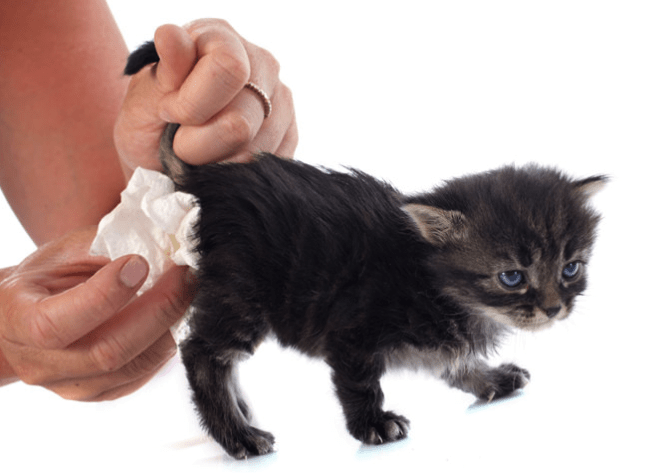1. They would dig around or knead
Often times, we would see adult cats digging at their litter boxes, then we know that they are going to dump their waste into the litter. It is no different with kittens. Thing is, kittens do not have yet a differentiation between cat litter or linen, cat litter or your foot, cat litter or any other surface. They would literally dig around anything (even if that anything is not diggable).
2. They will assume a squatting position
After the kneading and digging motions, they will soon squat and become seemingly ready to dump that poop or pee. Usually, they will forego the digging and the kneading and go straight for squatting. As soon as you see them assume this position, quickly get them to their litter box.
3. The kitten could suddenly cry out relentlessly
Cats can’t talk. They can’t tell us that they are about to poop or pee. But they have a way of telling us without having to talk – and that is by crying or meowing non-stop. When a kitten crying and meowing and crying, perhaps it is starts something churning in its stomach or bladder. Kittens who usually do this are more self-aware and can quite control their bowel movements already.
Things to do!
1. Do the stimulation yourself
If for an instance where the mother cat is not helping her kittens as she should, you can now intervene and be the one to help those kitties. Stimulate the kitten’s genitals by using a very soft absorbent towel or tissue or any cloth.
Refrain from using materials that are infused with chemicals, even alcohol or scented wipes. Also, avoid materials that have a coarse and harsh texture as it can irritate the kitten’s genital area. You can choose to dab it in cold or hot water if you see fit.
In stimulating the kitten, do circular motions in the particular area depending on the kitten’s need: pooping or peeing.
2. Body positions
You can hold the kittens up and stimulate the kittens, or you can have them on their backs laid very gently on the table. It is up to you and to the kitten actually. It depends on how comfortable the kitten would be in the position you choose for it to assume. You can also opt for a simulation of a natural process by having the kitten on all fours and stimulate its nether regions just as how their cat mom would do it
3. Prepare a litter box
When kittens reach the age where they are able to poop and pee on their own, then you can also start to introduce the litter box to them. There are kitten litters out there that can be suitable for these adorable little ones.
Poopy pants alert
Kittens are not yet adapted to several of its body functions as it is only beginning to develop into a pre-adolescent cat, meaning there will be moments wherein kittens are unable to control their poop and pee – it will just be out there with no warning any. Aside from that, kittens are also unable to poop or pee on their own.
As they wriggle around their nesting box, they may bump into another’s genitals causing it to become stimulated – eliciting an uncontrolled poop or pee. Besides, during the early stages of kittenhood, the only thing that your kitten consumes is milk. As we all know, milk is easily expelled by the body. And so with cats.
This is the reason why you will notice the momma cat licking her kittens’ genital area quite often. It is not only for grooming and hygienic purposes but also for stimulation – to help the kittens poop and pee.
When asking, when do kittens start pooping and peeing, the answer is pretty simple: kittens could surely poop and pee at any age, but during the early stages of kittenhood they will have to need some help from their momma cats. As they reach two to three weeks of age, then they will be able to poop and pee on their own.
